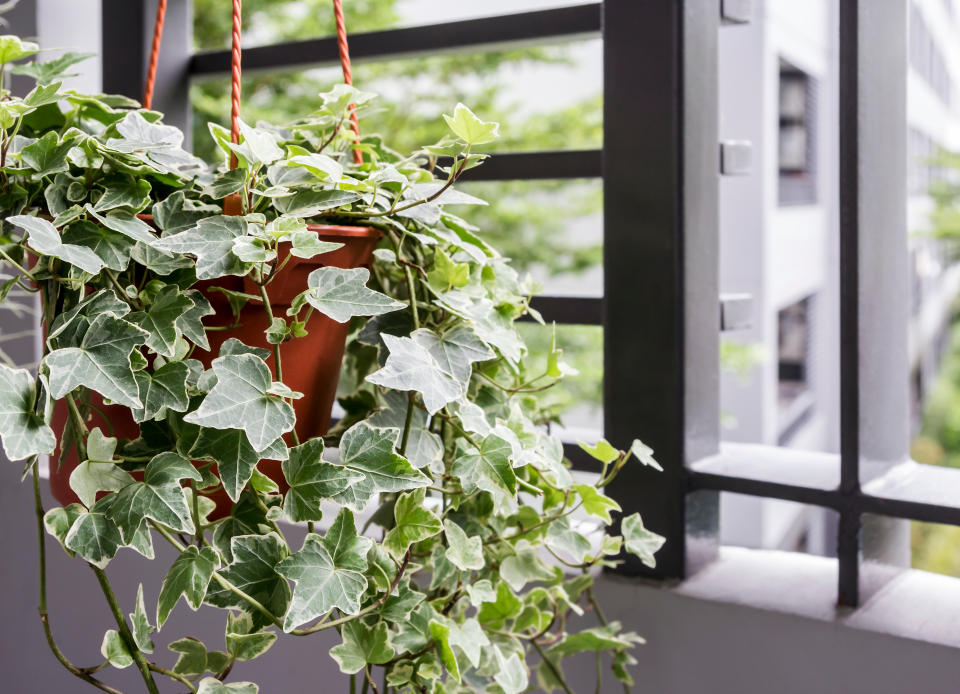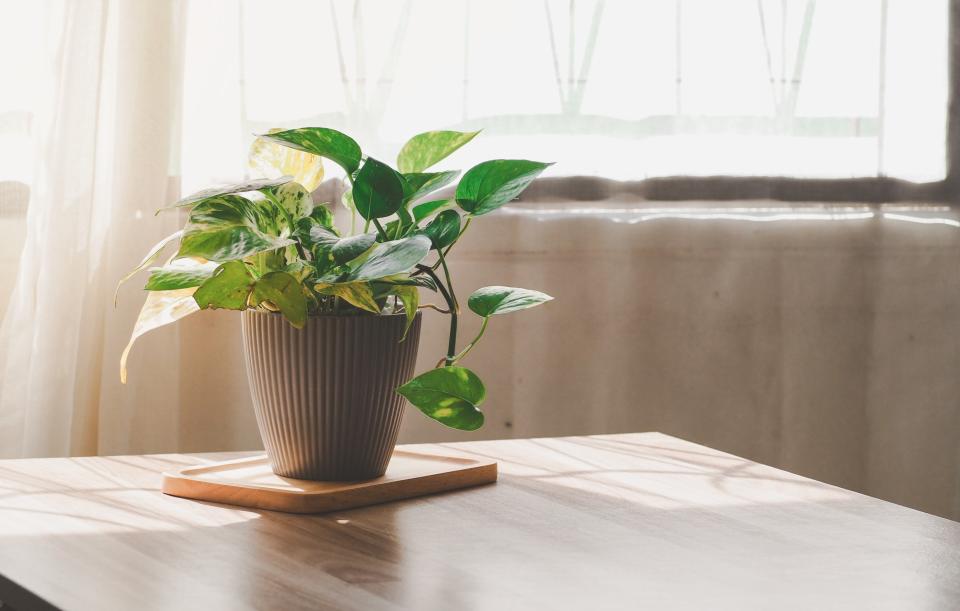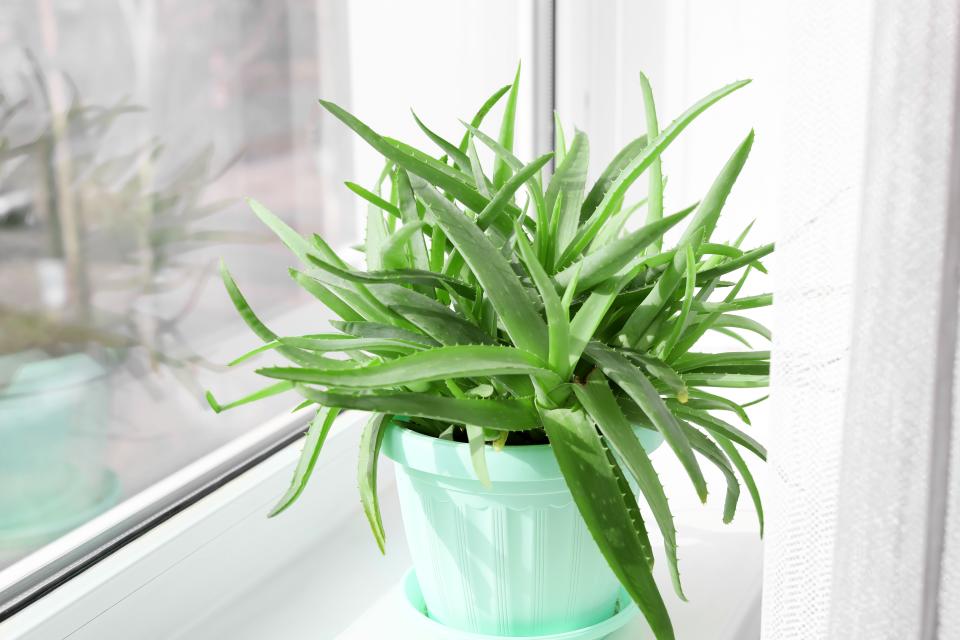Can Houseplants Improve Air Quality? 3 Types That May Improve Allergies, Headaches, and Sleep
There's nothing quite like a leafy houseplant to brighten up your living room. From florals to thick greenery, plants make dull rooms feel lively and fresh. Most Americans agree — a recent poll found that 66 percent of US households own at least one houseplant. Plus, "plant parents" report that 15 minutes of interactions with their plants (taking care of them) reduces stress levels. Better yet? Some houseplants may do more than just beautify your space — certain plants may reduce a small amount of toxins in the air, making your living space more healthy. Learn which plants have the potential to improve your air quality below.
Note: A scientific review published in 2019 found that one or two houseplants don't do much to purify air in the home. To truly clean the air in your house, invest in an air purifier.
To Ease Allergies: Try English Ivy

A cozy home has one downside: It allows molds to breed, causing indoor allergies for many folks. The fix: Place an English ivy plant in your most-used room. American College of Allergy, Asthma and Immunology scientists found that an ivy plant reduced the amount of airborne mold spores inside of glass containers. Keep in mind that English ivy is toxic and should be kept away from children and pets. The study authors recommended planting it outside instead.
To Block Headaches: Try Golden Pothos

Excess indoor toxins called volatile organic compounds (VOCs), emitted by everything from carpeting to insulation to wood products, can cause headaches. What may help: golden pothos. In a paper written at the Mount Sinai School of Medicine research, researchers stated that it lowers toxins called benzene and trichloroethylene. Plus, research from 2005 found that it removed 74 percent of VOCs including formaldehyde, toluene, and xylene in a tightly-sealed chamber.
To Sleep Better: Try Aloe Vera

A succulent on your nightstand releases oxygen while absorbing carbon dioxide from the air around the bed. And by boosting nighttime oxygen levels, you may increase the time you spend in restorative, slow-wave sleep. This reasoning comes from a 2018 study which found that rats put under anesthesia and exposed to higher levels of oxygen spent more time in slow-wave sleep.
This content is not a substitute for professional medical advice or diagnosis. Always consult your physician before pursuing any treatment plan.
A version of this article originally appeared in our print magazine, Woman's World.
